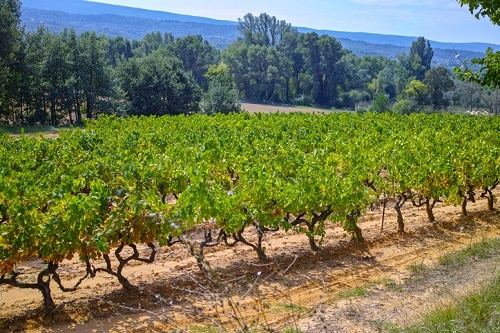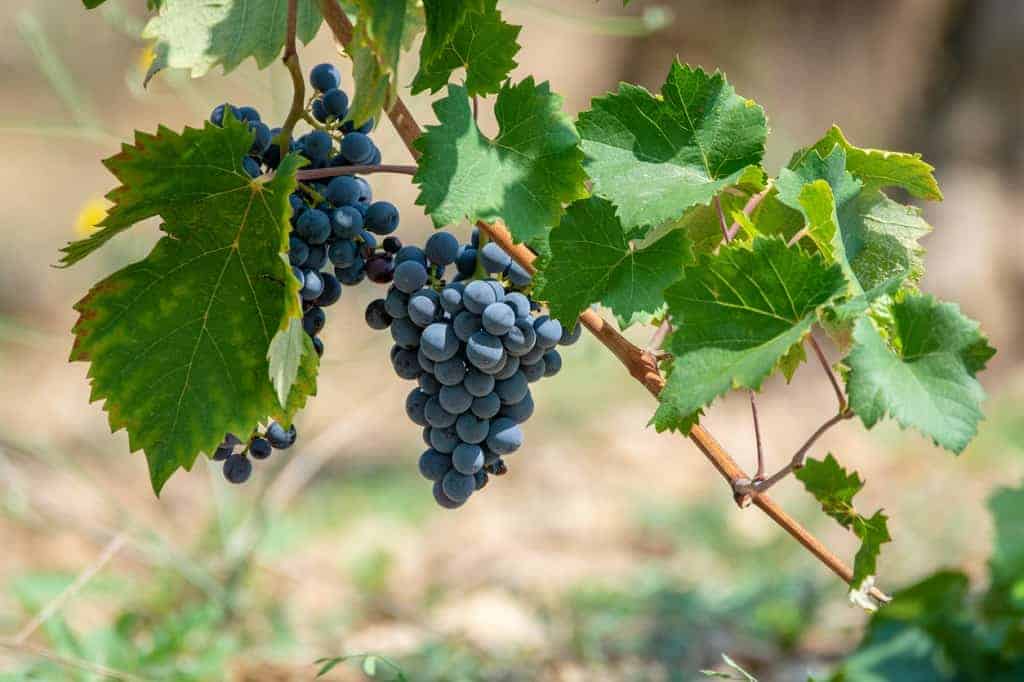Cinsault Grape Variety & Wine Profile: Taste & Food Pairings
Last Updated on December 27, 2019.
Cinsault (or, Cinsaut – we’re sticking to the first spelling for consistency) is the quintessential southern French grape. It thrives under the hot sun, and can be found throughout the Rhône Valley, Languedoc, Roussillon, and beyond. Seldom bottled on its own, it’s most often blended with Grenache, Mourvèdre, Carignan, and Counoise, though the options are almost limitless.
In Provence, it’s one of the grapes used for those famous Provençal Rosés that taste like summertime in a glass.
The Tasting Notes of Cinsault
When bottled on its own, Cinsault typically produces fruity and fresh wines meant to be drunk young. Bright red berry fruits like cherry, ripe strawberry, and red currant dominate, complimented by black pepper, violets, and mulling spices. Basically, this is meant for popping open under the Provençal sun!
Cinsault Food Pairings
Cinsault and Cinsault-based blends are fairly versatile. Reds can work with standard southern French and Mediterranean fair: black olives, sheep’s milk cheese, ratatouille, and yes, even pizza. However, its spiciness can stand up to heartier fare like grilled sausage or garlic-heavy dishes. Rosés are perfect for niçoise salad or its sandwich twin the pan bagnat.
Important Wine Growing Regions for Cinsault
Cinsault is an important, although admittedly declining, player in the famous Chateauneuf-du-Pape blend and can also be found in other Southern Rhône blends. It’s also commonly used in Languedoc-Roussillon and Provence. In Italy, Cinsault goes under the moniker Ottavianello and can be found in small plantings.
As often happened, colonialism played a major role is spreading Cinsault and it can still be found throughout Algeria, Morocco, Tunisia, and Lebanon. North African wineries typically blend it with Cabernet Sauvignon, Carignan, and other similar heat-loving red varieties.
Other New World regions experimenting with Cinsault include Australia, California, Washington State, Chile, and South Africa. Fun fact: In South Africa, it’s called Hermitage (probably as a nod to the Rhône Valley) and is one of the parents of Pinotage.
As interest in heritage varieties continues to grow, Cinsault should be on everyone’s radar. It’s has incredible potential as a crowd-pleaser without being over-the-top, and it shows loads of potential to thrive in a range of locations.
Check out some of these Cinsault and Cinsault-based blends from around the world:
- Domaine du Vieux Telegraphe, ‘La Crau’, Chateauneuf-du-Pape, France
- Domaine Tempier Rosé, Bandol, Provence, France
- Chateau de saint Cosme, ‘Les Deux Albions’, Côtes-du-Rhône, France
- Domaine de la Mordorée, ‘La Dame Rousse’ Rosé, Côtes-du-Rhône France
- Mas Champart, ‘Causse du Bousquet’, St. Chinian, Languegedoc-Roussillon, France
- Onesta, Lodi, California
- De Martino Viejas Tinajas, Chile
Learn About These Other Wine Grape Varieties
Written By Jamie Metzgar
Jamie Elizabeth Metzgar began her career in wine by pouring in a tasting room on the East End of Long Island, NY. After moving to New York City, she landed a position at Chambers Street Wines where she was encouraged to pursue wine education at the Wine & Spirits Education Trust (WSET). She earned Level III certification there and has since earned California Wine Appellation Specialist and Certified Specialist of Wine certifications as well. After way too many moves, she has recently landed in Northern California where she is compiling an unofficial roster of dog-friendly tasting rooms.
Fruit Characteristics
Cherry, Ripe Strawberry Red Currant
Additional Characteristics
Black Pepper, Violets, Mulling Spices


